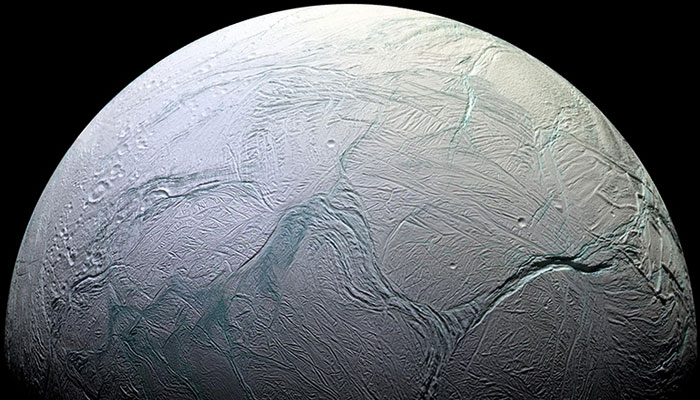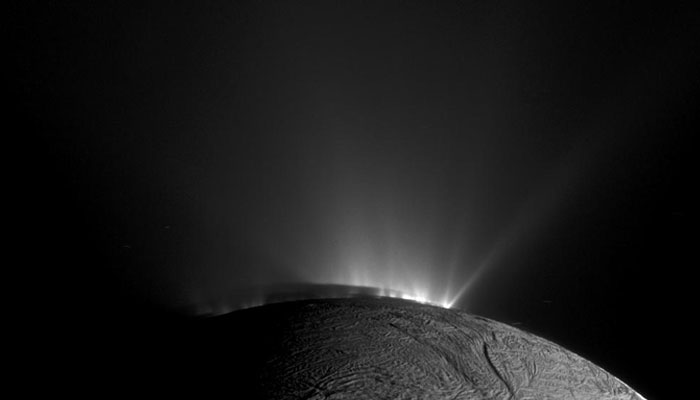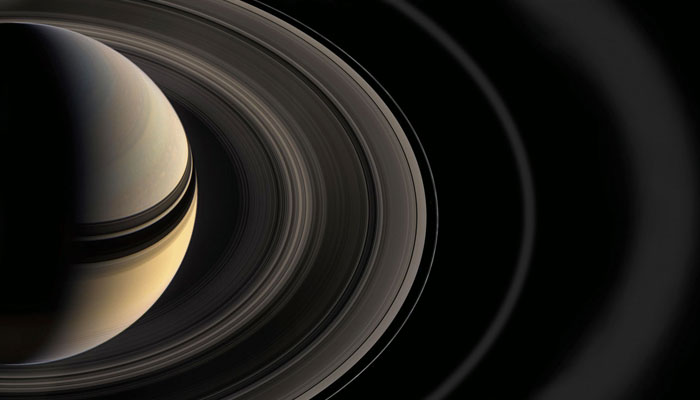All life-hosting elements detected on Saturn's icy moon Enceladus
The researchers earlier confirmed the presence of chemical compounds and minerals associated with hosting life on Enceladus
June 15, 2023

Scientists have been able to detect a vital element — necessary to host life and biological processes on Earth — in the interior ocean of Saturn’s moon Enceladus, lighting up hopes of finding potential life on the gaseous giant’s natural satellite, Reuters reported Wednesday.
They detected a considerable concentration of phosphorus — an important factor for living beings on Earth — was identified in ice crystals ejecting from the moon.
The findings were published in the journal Nature and announced by the US space agency’s Jet Propulsion Laboratory (JPL) — responsible for building the Nasa space probe.
Based on the information gathered by Nasa’s first spacecraft to orbit Saturn — Cassini — during its 13-year-long explorative journey of the planet, its rings and moons from the year 2004 to 2017.
The researchers earlier confirmed the chemical compounds and minerals associated with hosting life.

However, the newly discovered phosphorus was missing from the equation as it is among the other six necessary elements — carbon, oxygen, hydrogen, nitrogen and sulphur — for hosting life.
Lead author of the study, Frank Postberg, a planetary scientist at the Free University in Berlin, said in a JPL press release: "It's the first time this essential element has been discovered in an ocean beyond Earth."
Phosphorus is required for DNA structuring, cell membranes and energy-carrying molecules available in all forms of life on Earth.
Nasa’s Cassini passed near a plume of ice crystals — a material which feeds Saturn's faint "E" ring with icy particles outside the planet's brighter main rings.

The planet’s one of the 146 moons is a prime candidate in the search for places in our solar system beyond Earth that are habitable, if only to microbes.
Jupiter’s larger moon Europa is also believed to harbour a global ocean of liquid water beneath its icy crust.
With the help of geochemical modelling by the study's co-authors in Europe and Japan, it showed that phosphorus existed in concentrations at least 100 times that of Earth's oceans, bound water-soluble forms of phosphate compounds.
"This key ingredient could be abundant enough to potentially support life in Enceladus' ocean," said co-investigator Christopher Glein, a planetary scientist at Southwest Research Institute in San Antonio, Texas.
"This is a stunning discovery for astrobiology."
The scientists on the discovery said it is potentially habitable, not that it is currently hosting life, which has not been confirmed anywhere outside Earth.
Glein noted: "Whether life could have originated in Enceladus' ocean remains an open question."









